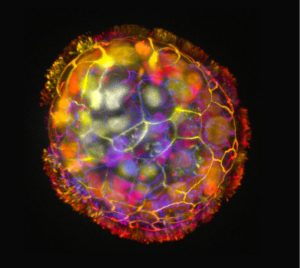Researchers from Tufts University and Harvard University’s Wyss Institute created tiny biological robots called Anthrobots from human tracheal cells. In a lab dish, the robots move across a surface and encourage the growth of neurons across a region of damage.
The robots are multicellular and range in size from the width of a human hair to the point of a sharpened pencil. They can self-assemble and have a remarkable healing effect on other cells. The goal is to use patient-derived biobots as new therapeutic tools for regeneration, healing, and treatment of disease.
The study, published in Advanced Science, discovered that bots can be created from adult human cells without genetic modification. The research answers what rules govern how cells assemble and work together in the body and whether cells can be taken out of their natural context and recombined into different “body plans” to carry out other functions by design.

Credit: Gizem Gumuskaya, Tufts University
The paper is the first work to comprehensively survey chip design with Machine Learning from an algorithm perspective. The main results of the survey include:
(1) Deep analysis of chip design that dissects the commonly adopted process of chip design, analyzing key steps in such different design stages as logic design, circuit design, and physical design, as well as in verification and test of each stage.
(2) Innovative taxonomy, classifying target problems into three categories—design result estimation, design optimization and correction, and design correction, formulating them into three ML problems, respectively: regression, search, and generation.
(3) Comprehensive survey presenting the definition of each target problem and analyzing the inherent reasons why ML algorithms are used to address the target problems.
(4) Future works–highlighting three key challenges that remain unsolved in existing works and provide insights into the future development of chip design with ML algorithms.

